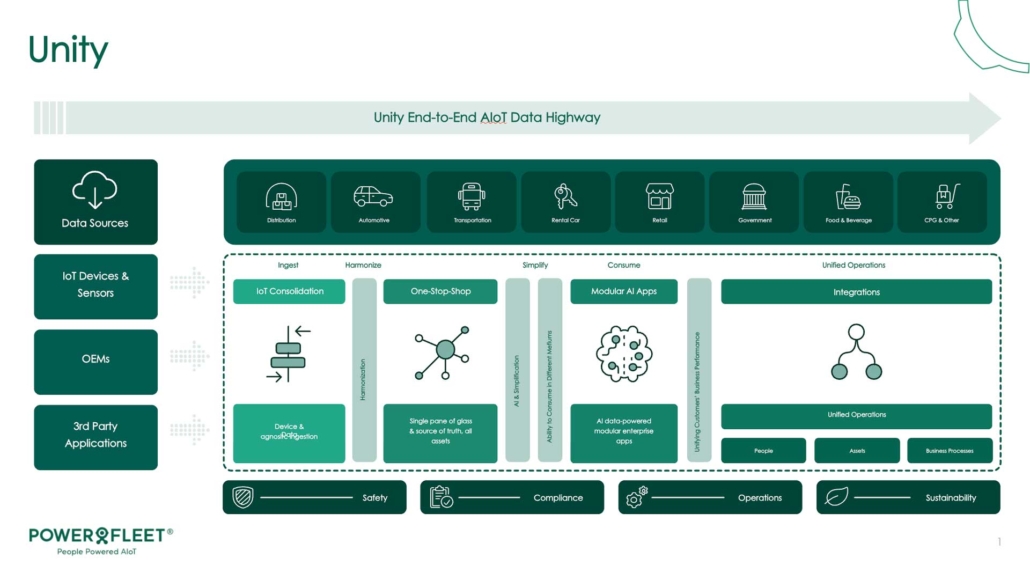Unifying Bus & Coach Operations: How Integration Drives Safety and Efficiency
Bus and coach operators face an increasingly complex operational landscape. They must manage diverse fleets with multiple drivers rotating through each vehicle daily while ensuring passenger safety, maintaining regulatory compliance, and delivering consistent, reliable service. Meeting these demands requires sophisticated and integrated solutions. However, many operators are hindered by disconnected systems that create information gaps, obstruct decision-making, and ultimately impact the bottom line.
The seamless integration of operational data – encompassing vehicles, drivers, maintenance, and passenger services – represents more than just a technological advancement; it signifies a fundamental shift in how bus and coach companies can optimize performance, enhance efficiency, and elevate the passenger experience.
Beyond Disconnected Systems
Many bus and coach operators currently rely on a patchwork of separate platforms: one system for vehicle tracking, another for driver management, a third for maintenance scheduling, and yet another for ticketing. This fragmentation creates significant operational blind spots. When an incident occurs, managers often struggle to quickly determine which driver was operating a specific vehicle, what conditions they faced, and how the event unfolded.
This fragmentation isn’t merely an administrative inconvenience; it directly affects service quality, safety standards, and operational costs. Without a unified view of operations, bus and coach companies face challenges in optimizing routes, managing driver performance, and maintaining consistent service delivery.
Unity: The End-to-End AIoT Data Highway
At Powerfleet, we’ve developed Unity – a comprehensive platform designed to address these challenges by serving as an end-to-end AIoT data highway for passenger transport operations. Unity breaks down data silos by ingesting information from virtually any source, harmonizing it into a consistent format, and delivering actionable insights through a single interface.
For bus and coach operators, this means finally having complete visibility across fleet operations through Unity’s approach, built on these three key pillars:
Data Ingestion – bringing together IoT data from multiple sources, including:
- Vehicle telematics systems tracking location and performance,
- Vision AI cameras monitoring driver behavior and road conditions,
- Onboard CCTVs, and
- Ticket machines records.
Data-Powered Applications – purpose-built applications leveraging this data that solve customer business problems
Unified Operations – sending harmonized and actionable datasets to augment customers’ business systems to streamline operations:
- Sending electronic vehicle inspection reports and vehicle health data from the CAN bus to maintenance management systems, or
- Pushing drivers’ data and driving records to HR and payroll systems.
Unity enables seamless integration with hundreds of IoT sources, eliminating the need for costly custom integration projects.
Practical Applications for Bus and Coach Operations
What does this integration mean in practical terms? Consider these real-world applications where Unity delivers tangible value to bus and coach operators:
Proactive Safety Measures: By combining our Vision AI camera technology with traditional telematics data, Unity can identify leading risk indicators before incidents occur. The system sends real-time alerts to drivers when it detects closed eyes, frequent yawning, or phone use, potentially preventing accidents before they happen. By ingesting data from ticketing machine providers to gather driver IDs and linking this with safety data, Unity can pinpoint which drivers exhibit unsafe or at-risk behaviors, allowing for targeted training interventions.
Service Performance Monitoring: Unity combines daily vehicle check data collected through EasyCheck with vehicle health metrics, driver behavior, and passenger counting systems to provide a comprehensive overview of service performance. This allows operators to pinpoint the root causes of service disruptions, whether they arise from vehicle issues, traffic conditions, or driver performance.
By integrating driver IDs, route data, and duty information from ticketing systems, Unity also enables a granular, driver-level understanding of operational efficiency across specific routes and shifts.
Sustainability and EV Transition: For operators considering electric vehicle adoption, Unity delivers essential insights by monitoring the state of charge, estimated range, and energy consumption patterns. This data helps determine the most appropriate routes for electrification and optimizes charging schedules.
From Data to Decisions
The true value of Unity lies not only in data collection but also in transforming that data into actionable intelligence. The platform’s AI-powered analytics identify patterns and trends that might otherwise go unnoticed, helping operators make proactive decisions instead of reactive responses.
Take driver performance, for example. By analyzing behavior across different routes and times, Unity can highlight areas where specific drivers consistently face challenges. This allows for focused coaching and skill development – far more effective than broad, one-size-fits-all training sessions.
Similarly, by correlating passenger counting data with vehicle location and time, operators can optimise schedules and allocate appropriate vehicles to meet demand patterns, improving operational efficiency and passenger satisfaction.
Bridging the Operational Divide
What sets Unity apart is its ability to create a continuous operational thread throughout every aspect of bus and coach operations. Unlike partial solutions that address individual functions, Unity’s comprehensive approach offers a true single pane of glass for managing all elements of your passenger transport fleet.
This unified visibility means the traditional divide between on-road operations and back-office management vanishes. Maintenance schedules can be optimized based on actual vehicle usage rather than arbitrary timetables. Driver assignments can consider performance history, training needs, and compliance requirements. Service planning can draw on historical passenger data from integrated ticketing systems.
The result is an operation that finally functions as a cohesive whole rather than a collection of independent parts, with each element informed by and contributing to the overall operational intelligence.
A Unified Path Forward
The challenges confronting the bus and coach sector necessitate more than incremental system improvements. They call for a fundamental rethinking of how operational data flows throughout an organization.
Unity’s end-to-end AIoT data highway exemplifies this new approach – not by replacing existing systems but by integrating them into a coherent, intelligent ecosystem. By eliminating information silos, standardizing data formats, and applying advanced analytics, Unity transforms fragmented operations into a unified whole.

The outcome for operators is significant: enhanced safety through Vision AI’s proactive monitoring, improved service quality through comprehensive performance visibility, reduced costs through optimized maintenance and resource allocation, and simplified compliance through automated reporting.
In an industry where margins are tight and expectations are high, this unified approach to operational intelligence is not just advantageous; it is essential for those aiming to thrive in the passenger transport sector of tomorrow.
With Unity, bus and coach operators can consolidate all onboard systems into one portal – including AVL, IoT, CCTV, and passenger counting (APC). The platform offers comprehensive benefits: unified operations, actionable engineered data insights, a single portal solution, and a fully connected vehicle with compliant hardware and integrated data streams across previously siloed systems.
